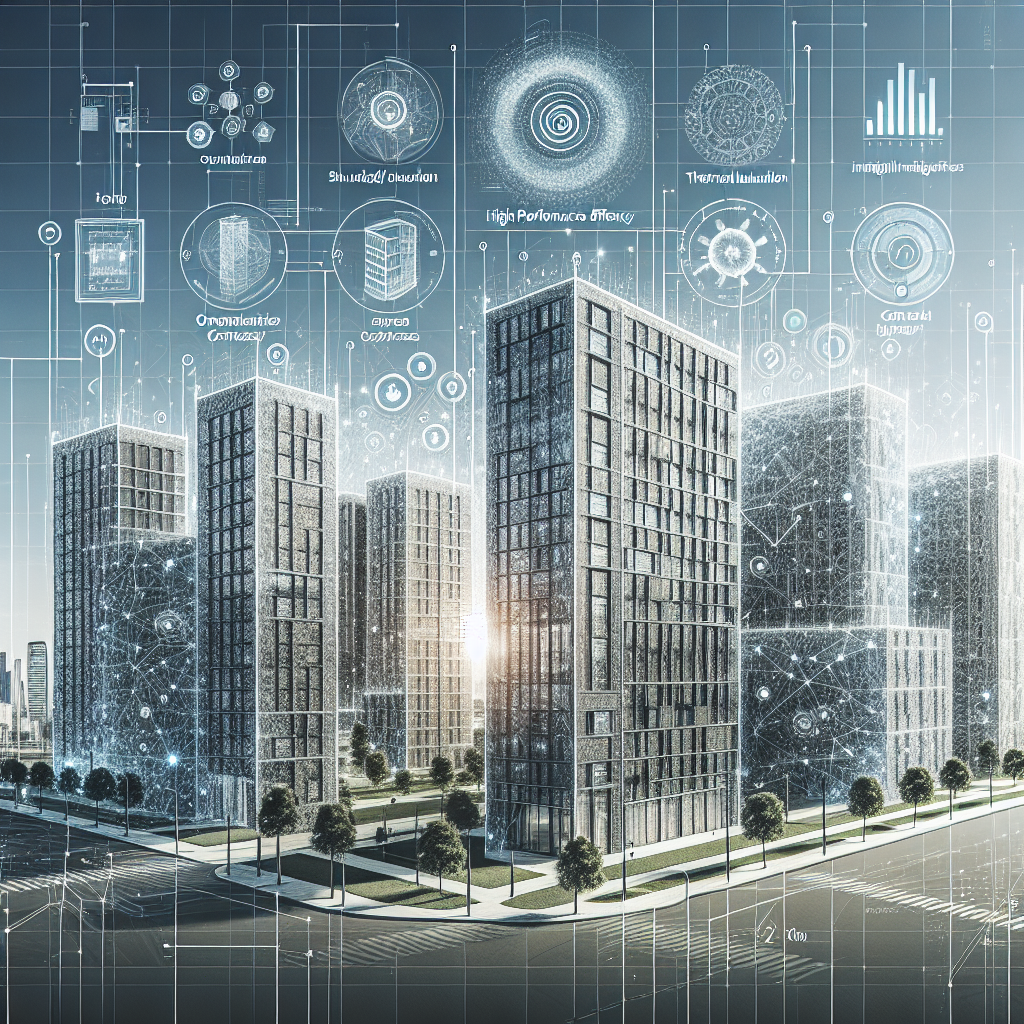AI-Driven Design Optimization for High-Performance Buildings
In recent years, there has been a growing emphasis on creating high-performance buildings that are energy-efficient, sustainable, and cost-effective. With advances in artificial intelligence (AI) technology, architects and designers now have powerful tools at their disposal to optimize the design of these buildings for maximum performance. AI-driven design optimization is revolutionizing the way buildings are planned, constructed, and operated, leading to improvements in energy efficiency, occupant comfort, and overall building performance.
AI-driven design optimization uses machine learning algorithms to analyze and optimize building designs based on a wide range of criteria, such as energy consumption, daylighting, thermal comfort, and indoor air quality. By inputting various parameters and constraints into the AI system, designers can quickly generate and evaluate thousands of design alternatives to identify the most efficient and sustainable options. This process can significantly reduce the time and cost of design iterations, leading to better-performing buildings that meet the needs of occupants and owners.
One of the key benefits of AI-driven design optimization is its ability to consider multiple design objectives simultaneously. Traditional design processes often focus on a single criterion, such as energy efficiency, without considering the trade-offs with other factors like daylighting or thermal comfort. AI algorithms can balance these competing objectives to find optimal solutions that meet all requirements. This holistic approach leads to buildings that are not only energy-efficient but also provide a high level of comfort and well-being for occupants.
Another advantage of AI-driven design optimization is its ability to learn and improve over time. By analyzing data from past building projects, AI systems can identify patterns and trends that lead to better design solutions. This continuous learning process allows designers to refine their designs and make more informed decisions based on real-world performance data. This iterative approach leads to buildings that are continuously optimized for maximum performance and sustainability.
AI-driven design optimization can also help architects and designers explore innovative design solutions that may not have been considered through traditional methods. By using algorithms to generate and evaluate design alternatives, designers can push the boundaries of what is possible in terms of building performance and sustainability. This can lead to the development of new design strategies and technologies that improve the overall performance of buildings and contribute to a more sustainable built environment.
In addition to optimizing building performance, AI-driven design optimization can also help reduce the environmental impact of construction and operation. By minimizing energy consumption, water usage, and material waste, high-performance buildings can significantly lower their carbon footprint and contribute to a more sustainable future. AI algorithms can assist designers in making informed decisions about building materials, construction techniques, and operational strategies that minimize environmental impact while maximizing performance.
Despite the many benefits of AI-driven design optimization, there are some challenges and limitations to consider. One of the main challenges is the need for high-quality data to train AI algorithms effectively. Designers must have access to accurate and reliable data on building performance, occupant behavior, and environmental conditions to ensure that the AI system can generate meaningful design solutions. In addition, there may be concerns about the privacy and security of data used in AI-driven design optimization, particularly when dealing with sensitive information about building occupants or operations.
Another challenge is the complexity of integrating AI technology into the design process. Designers may require specialized training and expertise to use AI tools effectively, and there may be resistance to adopting new technologies and workflows in the design industry. However, as AI technology becomes more accessible and user-friendly, these barriers are likely to diminish, making AI-driven design optimization more widely adopted in the future.
Despite these challenges, the potential benefits of AI-driven design optimization for high-performance buildings are significant. By harnessing the power of AI algorithms, architects and designers can create buildings that are more energy-efficient, sustainable, and comfortable for occupants. This can lead to lower operating costs, improved occupant satisfaction, and reduced environmental impact, making AI-driven design optimization a valuable tool for the design and construction industry.
FAQs
Q: How does AI-driven design optimization work?
A: AI-driven design optimization uses machine learning algorithms to analyze and optimize building designs based on a wide range of criteria, such as energy consumption, daylighting, thermal comfort, and indoor air quality. By inputting various parameters and constraints into the AI system, designers can quickly generate and evaluate thousands of design alternatives to identify the most efficient and sustainable options.
Q: What are the benefits of AI-driven design optimization for high-performance buildings?
A: AI-driven design optimization offers several benefits, including the ability to consider multiple design objectives simultaneously, learn and improve over time, explore innovative design solutions, and reduce the environmental impact of construction and operation. By optimizing building performance, AI-driven design optimization can lead to energy-efficient, sustainable, and comfortable buildings for occupants.
Q: What are the challenges of AI-driven design optimization?
A: Some of the challenges of AI-driven design optimization include the need for high-quality data to train AI algorithms effectively, concerns about privacy and security of data, and the complexity of integrating AI technology into the design process. Designers may require specialized training and expertise to use AI tools effectively, and there may be resistance to adopting new technologies and workflows in the design industry.
Q: How can architects and designers benefit from AI-driven design optimization?
A: Architects and designers can benefit from AI-driven design optimization by creating buildings that are more energy-efficient, sustainable, and comfortable for occupants. By using AI algorithms to analyze and optimize building designs, designers can reduce the time and cost of design iterations, improve building performance, and contribute to a more sustainable built environment.

